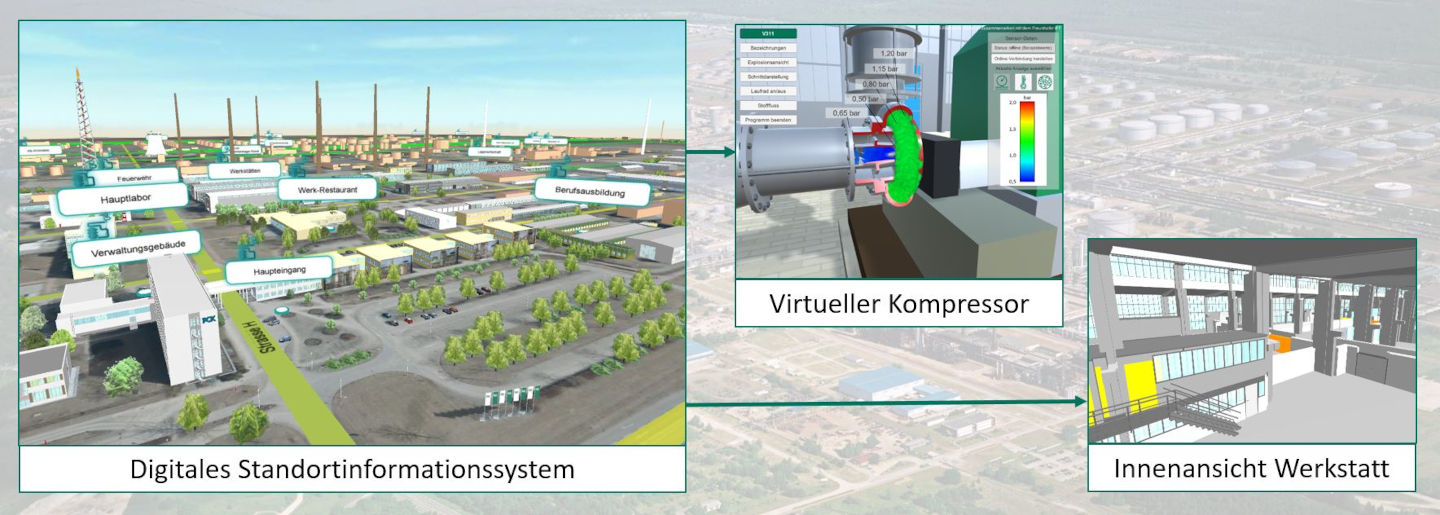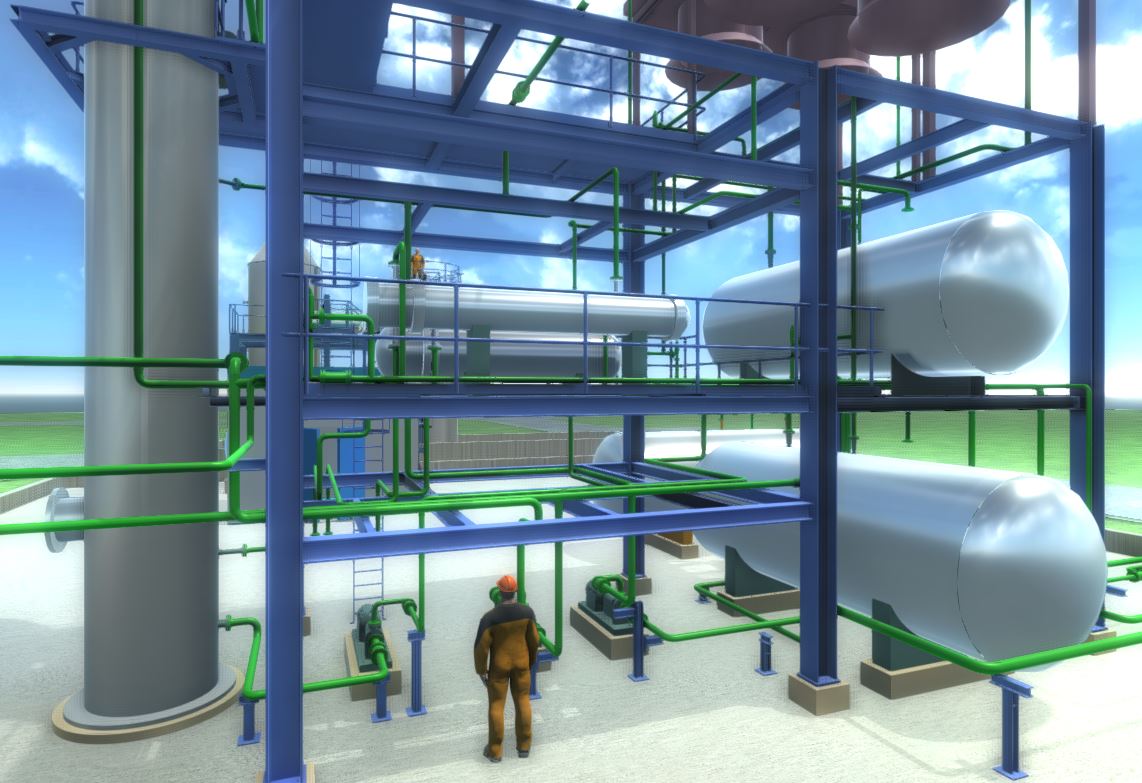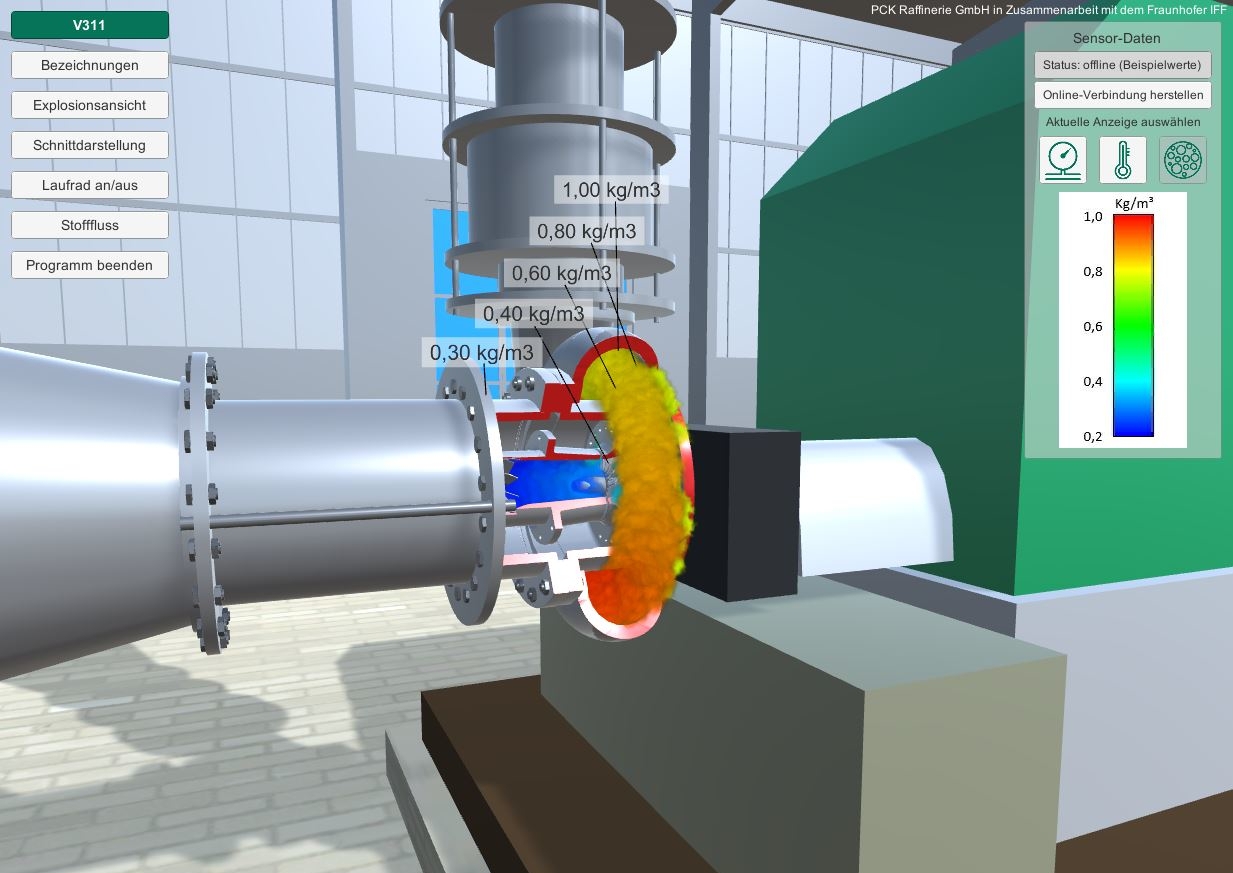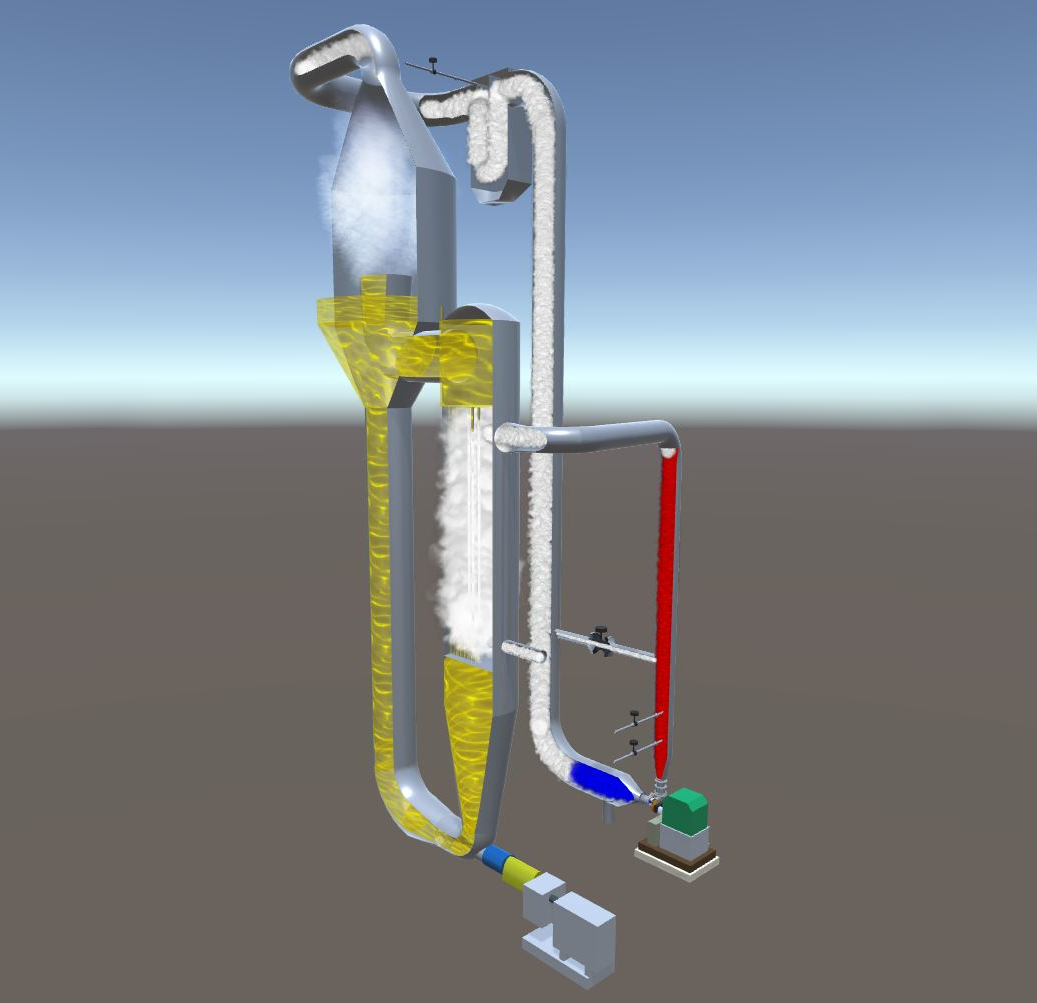The Fraunhofer IFF is helping PCK Raffiniere GmbH build a digital twin of its manufacturing facility in Schwedt. The digital twin creates new value added for design, operation and training, thus furthering the facility’s viable future development.
In a first step, a digital model of the facility and the surrounding region was created. The visualization includes the 20 km² premises with current aerial photographs, buildings, infrastructures and equipment components. Finally, information on the site plan and on local companies and their services were integrated in the model. A clearly visualized digital regional information system was ultimately produced, which can be explored interactively. Among other things, it is used to convey local information, present individual sections of the facility, infrastructures, companies and their performance and thus as a new public relation tool.



